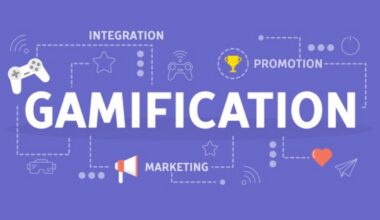
Ruby on Rails and Django are both best web development frameworks–but how do you choose one over the other. The aspects they have in common range from programming language similarities where both the Ruby and Rails are both object-oriented and dynamically typed, as well as their output that is unique to each task.
There are various Best Web Development Frameworks available to programmers in the programming world, but most stand out, as we all know Django and Ruby on Rails. They emerge as the popular web frameworks, and it has expected that this popularity will continue until 2020.
If you try to make a choice between the two, both Django and Rails are great choices–here are a few things to consider that will help you make the right choice.
What Do Both The Frameworks Have in Common?
It is safe to say that Ruby on Rails and Django are like twins, differentiating only in the vocabulary used under the hood and the philosophies applied–every born in a different environment.
- Languages
Python and Ruby, as described above, are object-oriented and dynamically typed languages–they are very different from the languages used in architectures like Java in companies.
One major difference is that Python and Ruby are open-source and very active and robust are their respective communities. It means that if you stick to using these tools, you will not struggle to find answers or information.
- Performance
Ruby and Python have almost the same performance level–the differences for a typical CRUD app are not noticeable. In broader applications, the difference is just as negligible–but if quality is high on your priority list and you need to support thousands of users at the same time, and then neither is the right choice.
Let us put it this way, both are fantastic at costly CPU operations such as image manipulation and can support thousands of users (not blasting performance but ok) but configuring Ruby and Python for such size requires a lot more effort.
- Architecture
Based on an MVC template, the architecture of both languages is well-structured–the app will be properly organized and will have simple divisions within the framework between layers such as specified routes, controllers, models, and bounded views.
Items are arranged in Rails and Django a little differently, but it is just the format so there’s nothing to think about.
What Django is All About?
Django launched in 2005, Django is a web application based on Python and a primary option for the creation of Python apps. What makes it so popular is that it is an open-source, general-purpose and free application that makes it easy to use. Django’s features are highly praised by developers. It has developed to simplify the creation process of complex, database-driven websites. With a clean and practical model, this system promotes rapid development. In addition, Python is the easiest language to learn and write easily. There are different types of applications that can be built with Python.
Cons of Django Framework
- Lacks the capability to handle multiple requests simultaneously
- Highly reliable on ORM system
- Makes web app components tightly-coupled
- Too Monolithic
Pros of Django Framework
- Scalable
- Django has the Representational State Transfer (REST) framework
- Mature Software with numerous Plug-ins
- Highly Customizable
- Effective Admin Panel
- High compatibility with databases and operating systems
- Adopts Battery-included approach
- Supports MVC programming
What Ruby on Rails is All About?
Ruby on Rails, written under the MIT License, acronynized as RoR is an open-source web application platform on the server side. As a model-view-controller, Rails offers incredible default server, web services, and pages structures. Developers are known to write code as a timesaving process.
The system mainly works on two concepts–DRY (Don’t Repeat Yourself) and Setup Convention. The latter being self-explaining removes the need to do the same programming function repeatedly, while the latter means that by definition, the world in which you operate, such as structures, databases, languages and more, allows for many logical scenarios. It means that instead of developing your own rules every time, you can adapt to them, making the entire programming process much easier.
Pros of Ruby on Rails
- Easy to modify and migrate
- Superior testing environment
- Active RoR community
- High-speed development
- Diverse tools and presets
Cons of Ruby on Rails
- Varying quality and standard of documentation
- Low runtime speed
- Tricky to create API
- Lack of flexibility
Major Difference between Rails and Django Framework
- Language
Although Django uses Python, Rails, launched back in 1995 and built using Ruby. Python is one of the top Programming Languages and known for highlighting the code’s simplicity and readability, while Ruby known for its qualities such as flexibility and equality, as well as its understandable syntax.
Ruby has designed to “enjoy” writing the language on the other side of the table, so it is essentially enjoyable. Although the applications developed using either of them will look and function the same, under the covers you can see the main difference.
- Architecture
One aspect that both web development systems have in common is that both MVC (Model-View-Controller) have implemented. It’s named MVT (Model-View-Template) for Django, though. For the most part, both MVC and MVT are identical and so slightly different.
The Model in Django represents the database, which defines the data structure, View is the Regular Expression-based URL Dispatcher which controls what users should see. Finally yet importantly, Template refers to a web template framework that merges with Django Template Language (DLT). Django himself does this part of the controller.
The template in RoR applies to the server information such as comments, images, messages, etc. Active Record takes care of all this. The View here covers the information in the HTML template and then sends it to the controller, which Active View will then manage later. The Action Controller now links Model and View and manages requests while also managing web browser responses
- User Interface
When comparing Django vs Rails on the user interface grounds, both are the winners. It’s because they’re both designed to offer a high-class experience. Such web-centric frameworks allow can Mobile App Development Company to create highly functional websites packed with flawless add-ons and plugins
- Speed and Performance
In the fight between RoR and Django, Rails are found to be 0.7 percent faster. It is because Rails has the benefit of a rich repository of awesome libraries and plugins to boost this framework’s speed and ultimately performance. Nonetheless, Django also promotes rapid development processes and is an amazing choice for a web application.
Nonetheless, Django vs. Rails ‘ performance is high both because they exploit modern programming languages while providing the tools to optimize the software
- Stability
For creation, innovation and stability are two parallel elements. The one winner that can do both successfully could be called. Ruby on Rails can juggle both because it allows users to reuse the code to eliminate dependencies. It also uses the Configuration Convention technique, freeing coders from further efforts.
On the other side of the table, by sticking to any proven method to solve the problems at hand, Python follows a more conventional approach, providing stability.
- Installation
Depending on the installation process, comparing Django vs. Ruby on Rails is not a hard nut to crack. The installation process of Django is very simple and therefore it only takes about a minute to fully install it.
It can’t be said the same thing about RoR though. First you need to understand what bundle and Gems are, as they are required to install Ruby’s packages. Such two are first downloaded and then run the Command Gem Install Rails to eventually install the Rails framework’s latest version.
- Security
In comparison with Django vs Rails, we had to include the security factor as it is an essential part of any website or applications.
Django has certainly won this functionality from Python. Yes, NASA also uses Django frameworks, which in itself is a proof enough to recommend how stable it is. Django backed by middleware’s, while Rails is backed by active files. Django has tools to protect the Django app from SQL injection, cross-site (XSS) scripting, and so on.
Overall, both frameworks for web development are a reliable option and can be trusted for security.
- Scalability
While Python’s scalability has inherited by the Django web platform, it still lags a little behind Rails. It has better scalability resulting from its attributes like freedom and code flexibility. Both are heavyweight web development frameworks, so both designed to keep scalability in mind, but the winner’s title here is Ruby on Rails development.
- Syntax
It is a well-known fact that the syntax of Ruby is very versatile. Well, Ruby on Rails ‘ advantages can’t always be associated with this. It can cause problems and make it more difficult for the task to be passed on to other team members as one feature can be done in many different ways, creating confusion.
Whereas, Python argues that there should be only one obvious way to do something, making debugging and reading the code easier.
- Principles of Development
Principles are like the glue that holds together the whole web app development process. Django has two notable principles–DRY (which we had already discussed) and “Explicit is better than Implicit.” This idea helps developers to create easy-to-understand software that managed by many people.
Ruby on Rails is also not short of the principles of design. It also uses DRY and Convention on Configuration, which suggests that, instead of making your own configurations, you have to follow conventions to be successful. This increases pace and effectiveness
- Documentation of Frameworks
In this regard, to be clear, it is a connection between the design frameworks of Django vs. Rails. All frameworks are well known, making the most common FAQs and answers to questions easy to find. The documentation language of both is very simple, understandable, and clear, without placing the reader in the mayhem state.
- Maturity of Platform
Django has first released in 2005 and has since served on the list of the best frameworks for web development. His recent release, with many new features and improved usability, was released in April 2019. First released in 2003, Ruby on Rails has officially declared as an open-source application in 2004. As the latest version of it has released in August 2018, it also regularly updated.
- HTML Template
Although the core feature of both Django and Ruby on Rails framework is template, Django uses a simple template language to allow developers to create templates with minimal programming and HTML capabilities. On the contrary, the views of Rails tend to be more complex (individual page templates).
- Usage
If you are looking for a framework that helps to create complex database-driven websites and web apps in less time, with system management, scientific programming, data analytics, and manipulation performance, then Django is the way forward.
Rails, on the other hand, also helps develop database-backend web apps by providing developers with improved functionality and autonomy. It is an ideal choice for Meta programming and building fun codes because Ruby is versatile in design.
- Community Support and Ecosystem
As an open-source platform, Django also has an open-source ecosystem, which means that developers have access to a sea of libraries and software, both paid and free. In addition, Django’s official documentation is more than adequate for reference if you need a response to any question.
Django group has more than 11,000 users to use for developers with more than 4,000 ready-made products. In addition, Ruby on Rails also has a highly active group of 5,000 committed people who have contributed a number of Gems with reusable software already.
- Learning Curve
It is well known that Python is a very easy language for programming to learn among its competitors, which also makes Django’s learning curve small. Numerous offline and online resources are open, making it easier to answer queries. On the opposite, because of individual principles, Rails has a very steep learning curve that a developer needs to refine to become professional in Rails. So, only experienced programmers and developers are recommended.
Use Cases of Django
- Disqus
- Spotify
- Youtube
Use Cases of Ruby on Rails
- Basecamp
- SlideShare
- Crunchbase
- Hulu
- AirBnb
Which Framework to Choose and When
Overall, on Rails web frameworks, both Django and Ruby are at the top of their class, giving each other a tough competition. Nonetheless, there are some places where one overrides the other.
For example, you should go with Django if you want a highly detailed app packed with remarkable features. However, if you are thinking about a fast release and then focusing on the website specifics or a web app, then Ruby on Rails is your perfect choice. It’s because it has shortcuts and configuration features that make it simpler for web applications to incorporate complex features.
KEY TAKEAWAY
So, who on Rails or Django is Better Ruby? Okay, in one word, it’s hard to answer this question. There are many similarities and differences between Django and Rails. Both are successful in various tasks. Inefficiency, pace, community support, scalability, safety and more, they both give each other a tough competition.
Yet learning Ruby on Rails is absolutely worth it as it is one of developers and programmers ‘ favorite options to create websites and web applications. In reality, it has predicted that the success of RoR will continue in 2020, making learning it imperative.
If you have any concerns, email our Full Stack Developer team at [email protected] today. We would love to hear your new ideas and thoughts as well.




